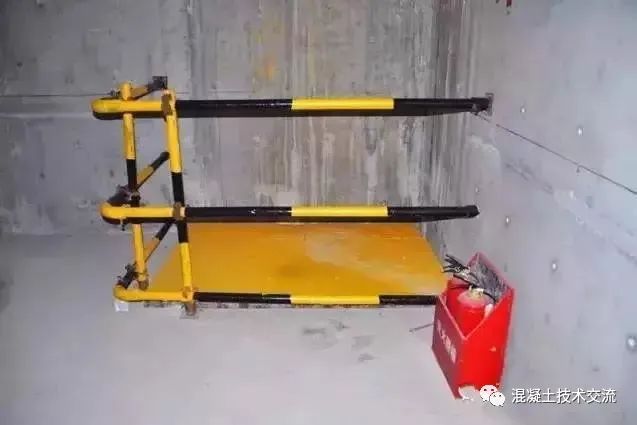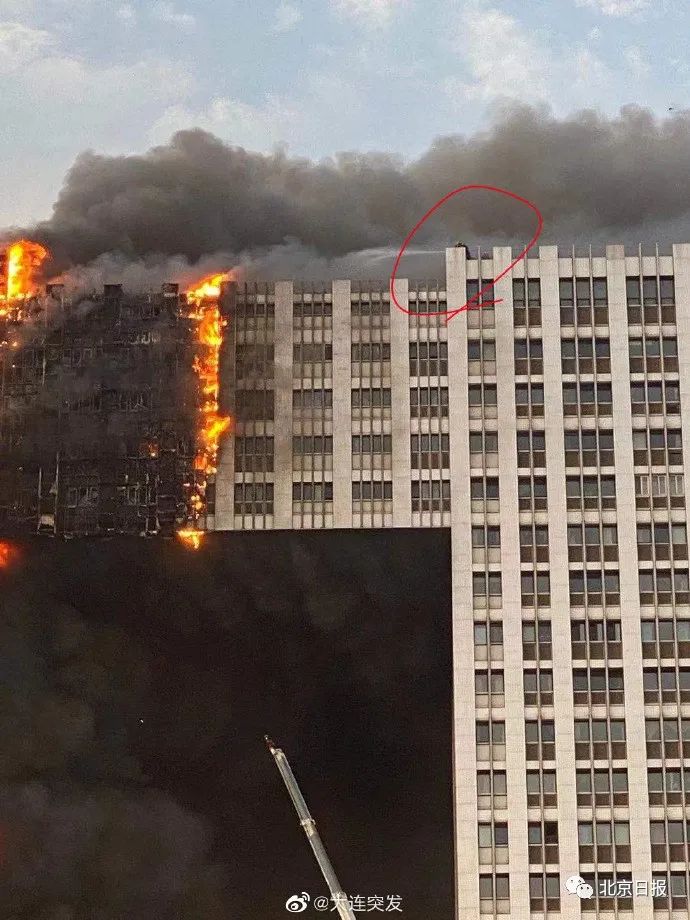Building construction refers to the production activities in the implementation stage of engineering construction
. 
It is the construction process of all kinds of buildings and the “construction site”
.
The technology and practice used in the construction process have been exploring and updating
.
This paper summarizes the new technology and practice of building construction for the reference of partners
.
1、 The construction technology of masonry wall without frame hole: first, weld a T-shaped flat iron at the end of the steel pipe cross bar of the scaffold, the masonry height is to the erection point, and the erection point should be selected at the intersection of the vertical mortar joint and the horizontal joint; when supporting the scaffold, the T-shaped flat iron at the end of the cross bar can be horizontally supported on the wall, and the mortar can not be placed at the place where the flat iron is placed, so as to facilitate the disassembly and assembly
.
2、 New technology for formwork erection of constructional column and ring beam without support hole: the first technology is to embed Φ 14 split bolt (through Φ 15pvc plastic pipe) in the section of “GZ” support formwork to fix the formwork, instead of the support hole left in masonry, so as to improve the overall masonry effect of the wall
.
Specific construction process operation: “GZ” formwork is made of 12mm thick plywood, which is integrated with three 50mm × 80mm wooden corrugations, that is, each side of “GZ” uses a set formwork
.
During formwork erection, the split bolts are embedded in the “GZ” section, four groups of 50 mm × 80 mm short wood squares are used to lock each layer at the outer side of the end, and 100 mm × 100 mm wood squares are used to support the inner internal corner
.
This method should be used for brick concrete structure with “one” shape, L-shape corner and T-shape corner
.
Process 2: (1) the combined set shaped steel formwork is adopted
.
The formwork is locked by short steel pipe and special through wall bolt
.
The special through wall bolt is welded with Φ 12 steel bar, one end of which is welded with steel pipe sleeve or A-shaped retaining head, and the other end is threaded
.
(2) When the wall is built, the plastic pipe shall be embedded in the frame hole reserved according to the requirements of the specification, and then the plastic pipe shall be pulled out to form the reserved hole
.
(3) When the formwork is supported, a special bolt of Φ 12 is inserted into the reserved hole, and the thread end is tightened with a nut
.
Process 3: ring beam hard frame formwork process: (1) when the wall is masonry, the Φ 16pvc plastic pipe is buried at the brick under the ring beam
.
After the masonry, the pipe is gently rotated and pulled out to form a Φ 16 installation hole with a spacing of 800-1000mm
.
(2) Install the special tool made of ∠ 40 × 4 angle steel, and fix it with Φ 14 bolts in the installation hole
.
(3) Install the common combined steel formwork, tighten the bolts and adjust the flatness of the formwork
.
Construction method of structural column formwork: (1) in masonry construction, at 240mm away from the structural column on the horizontal mortar joint, a Φ 16mm installation hole is reserved with a Φ 16pvc plastic pipe, and the vertical spacing is not more than 800mm
.
(2) After the acceptance of structural column reinforcement, the combined formwork shall be installed
.
(3) Install the special mould made of ∠ 50 × 5 angle steel and fasten it with Φ 14 through wall bolt
.
Process 4: cut the PVC pipe of corresponding length according to the thickness of the wall, set rubber plugs at both ends, so that the outer size of the two plugs is just the section size of the concrete component, put on the split bolt rod to fix the formwork when erecting the formwork, take out the rubber plug when removing the formwork, and fill the hole with 1:2 cement mortar
.
Another method is to prefabricate 5mm thick flat iron
.
One end of the flat iron is made into 5cm long 90 degree hook
.
When the wall formwork or scaffold is erected, the flat iron is penetrated into the embedded brick joint of the wall, which also has the same effect as the wall
.
Advantages: 1
.
The eyeless mold supporting process needs less stereotyped molds, high mold turnover rate, cost saving, and convenient template installation and disassembly
.
2
.
No holes are left on the masonry, which improves the overall strength of the wall
.
3
.
The concrete surface is flat, smooth and uniform in color, which effectively eliminates the common quality problems of concrete grouting and wall pollution
.
4
.
The process of conventional hole erecting is saved, the labor cost is reduced, and the conditions for shortening the construction period are created
.
3、 Application method 1: combined small steel formwork and special-shaped angle formwork are used at the joints of beam, column and plate, and sponge strips are placed at the joints of formwork
.
The special-shaped corner template is customized according to the actual situation
.
Method 2: bamboo plywood was used to customize the template
.
4、 Integral construction method of concrete flanging in toilet room and floor cast-in-place concrete in order to improve the waterproof performance of toilet and bath room, the hanging formwork method and floor concrete integral pouring are required for concrete flanging
.
Five, sponge sponge in the template engineering application technology and practice: in the construction of template works, before the installation of the structural column and ring beam formwork of the brick and concrete structure, the soft foam sponge bar or the rigid sponge strip with double-sided adhesive is pasted on both sides of the structural column and the bottom wall of the ring beam
.
Advantages: it can effectively prevent the wall pollution caused by the overflow of concrete slurry
.
6、 Masonry method of inclined top brick at the top of infilled wall: the top brick used for masonry shall be cut in advance, so that the upper and lower contact surfaces of the inclined top brick are plane, and the angle between the inclined top brick and the horizontal plane is 60 degrees when the inclined top brick is laid
.
Advantages: the upper and lower parts are plane, which ensures that the thickness of masonry horizontal mortar joint is about 10 mm, and avoids the common quality problem of too large mortar joint thickness
.
The angle between the top brick and the horizontal plane is 60 degrees, which makes the masonry more dense and better integrated
.
It avoids the common quality problem of the joint between the filler wall and the frame beam after plastering
.
The construction is convenient, the masonry is neat, and the appearance quality is good
.
7、 The special-shaped brick in masonry adopts cutting or prefabrication construction method
.
The seven ends used in the wall are generally prefabricated by the brick yard or cut by the toothless saw on the construction site
.
The lowest skin brick of the protruding part of the horse tooth joint brick is also cut into a 45 degree slope by the toothless saw
.
Advantages: the lowest skin brick of the protruding part of the horse tooth tenon is cut into a 45 degree slope, which is convenient for concrete pouring, and improves the appearance quality of the wall
.
8、 The application technology of bark tree pole in masonry construction: the bark tree pole is made of 3cm × 5cm wood square planing, the adjustable base is under the bark tree pole, and the bark tree pole should have clear marks such as mortar joint, compression bar position, wall structure change, etc., which are fixed and stable
.
9、 Precast concrete blocks are used for the construction of wooden bricks for doors and windows
.
The traditional method of fixing the door and window frames is to embed wooden bricks in the wall
.
Because the walls are mostly built with perforated bricks and the wooden bricks are not fixed firmly, now they are replaced with precast concrete blocks with the same section size as the blocks
.
When the walls are built, the precast concrete blocks are built into the original position where the wooden bricks are placed, and the door and window frames are fixed in the precast concrete blocks Just on the soil
.
10、 The method of fixing the position of the steel bar of the structural column is to set a steel bar well shaped fixing frame at the top of the structural column
.
The steel bar of the structural column is fixed by the well shaped frame together with the stirrup at the inner side of the steel bar skeleton, which ensures the spacing of the main steel bar of the structural column
.
The tool type well shaped frame can be used repeatedly, which can effectively prevent the steel bar displacement in the process of concrete pouring and vibration
.
The reinforced grillage is made according to the size of structural column
.
The Φ 8 or Φ 10 steel bar is spot welded into a well shaped support by an electric welding machine
.
Both sides of the grillage are close to the brick wall, and the other two sides are close to the formwork
.
Before installation, ensure the accurate size
.
After the grillage is placed, it is bound to the structural column reinforcement together with stirrups, and finally the formwork is installed
.
11、 Before pouring concrete, the PVC plastic pipe is put on the column reinforcement (the root of the pipe is the elevation of the concrete pouring), which can effectively prevent the cement slurry from exposing the column reinforcement and facilitate the concrete construction
.
12、 Construction method for retaining construction joint of stair slab: during the formwork erection of stairs, according to the construction specifications, the construction joint of stair step shall be retained within one third of the span of the cast-in-place floor slab of stairs, the lower part of the transverse block formwork of the construction joint of stair step shall be slotted according to the reinforcement spacing and specifications, the stuck reinforcement shall not be displaced and perpendicular to the bottom formwork, and the main reinforcement of the bottom slab shall be padded with the same thickness of the protective layer The same degree of reinforcement or plastic cushion block is used to ensure the thickness of the protective layer of the main reinforcement of the bottom plate.
.




